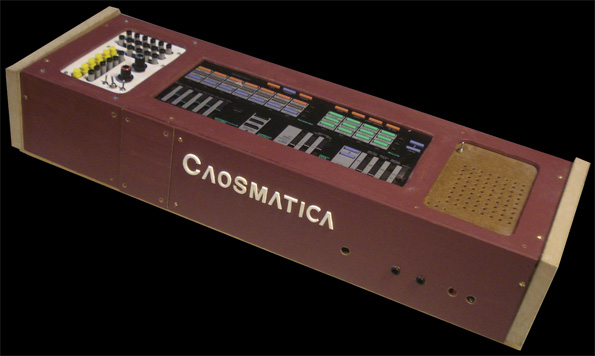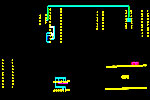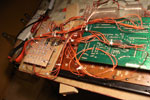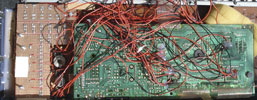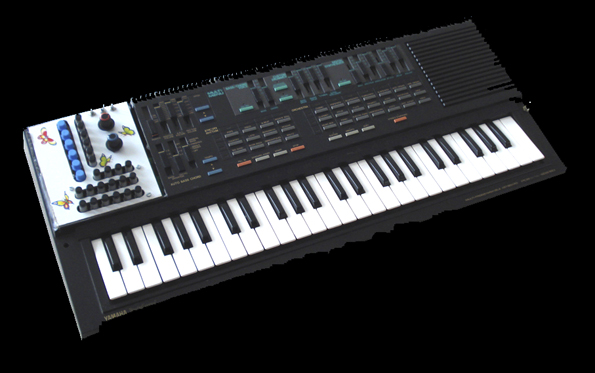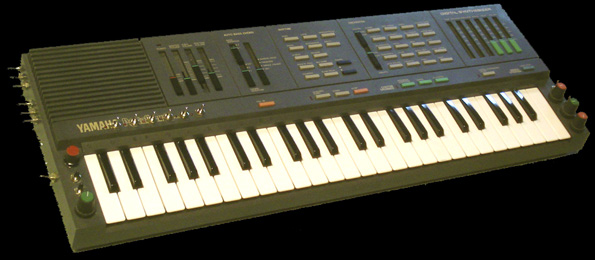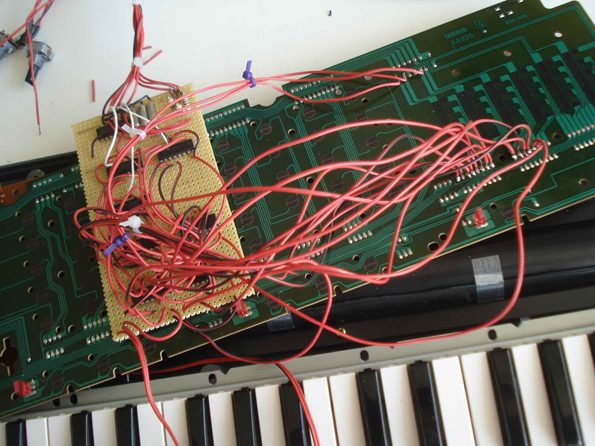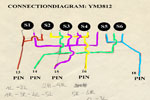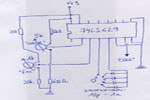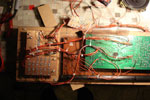|
So now here some information on the Yamaha Pss360 keyboard. As mentionned it has almost the same technical architecture like the 470/560. Here I describe what I did with the 360 only. This family of keyboards has a synthesizer section. the parameters on that synthesizer are changed by sliders. this sliders are no potentiometers, but 5 position switches. It makes a nice effect to play a note and to change the sliders while still holding down the key. I wanted to have the changing of the sliders automated. I used a squarewave oscillator that drives a counter upwards in a loop (1, 2, 3, 4, 5, 1, 2, 3, 4, 5, 1, ...). The counter controls an array of analog switches. The pins of the switches are soldered to the points on the pcb, where the sliders would have closed the connections. It sounds like a kind of arpeggiator.
|









